-
Posts
7,568 -
Joined
-
Last visited
Content Type
Profiles
Forums
Gallery
Events
Posts posted by Louie da fly
-
-
Yes, the weathering's a bit much, but I feel that if you try too hard to fix it you'd probably make it worse. It's inherent in the kit itself. Consider it a learning experience for next time.
Yes, a wooden yard as well would be a very good idea. I don't use a lathe in tapering (the yards are usually too long and thin to work on in a lathe without bowing), I just do it by hand. Or you could use the poor man's lathe - a hand-held electric drill - and sandpaper.
I just checked out those Revell shields - Whoa! My eyes! Well, yes, Viking shield were probably as colourful as they could make them, but the reds would be ochre, as would the yellows. Blue was a sort of blue-grey as far as can be discovered. And yes, it's likely that everybody had a different design on his shield, though there's no proof that this was the case, the idea of everybody in a 'military unit' being distinguished by common shield designs wouldn't come in for several centuries yet. The most reliable site I've found for the patterns on Viking shields (and I've made quite a study of the subject) is https://www.scribd.com/document/171696247/The-Viking-shield-from-archaelogy . Peter's a friend of mine and he's passionate about getting historical details right.
Steven
-
Thanks, Grandpa Phil. That Quickshade is interesting stuff.
I've been doing more experimentation with the colour of the weathered wood and I think I've got a result I can be happy with. This time I mixed black and white enamel to duplicate the colour of the weathered timber in our garden (posts, fence palings etc). Then, when I was happy I had the colour right, I painted another sample piece and immediately rubbed it back off, and finally went over it with mineral turps on a brush and wiped again. I did the same thing with my earlier sample piece as well. Here's the result. The one in the foreground in the first photo and on the right in the second is the one I did newly from scratch, the other is the old sample piece I re-painted. Not that much difference, but I think the new one looks better, even though one plank seems to have resisted the paint somewhat. Still, maybe that makes it more interesting.
Knights for the halyards.
For the foremast (which on a lateener is usually the biggest). Note that the base is angled, because the knight follows the slope of the halyard.
Dry fitted. I had to keep re-cutting the angle of the base till I got it right.
Three knights complete, one for each mast.
And then I realised that because knights basically go all the way down to the keel, the one for the mizzen was wrong - it's out on the poop with no structure beneath it except that of the deck. I'd wondered why why the ship in the pic below has a block at deck level for the mizzen halyard, not a knight. Now I know.
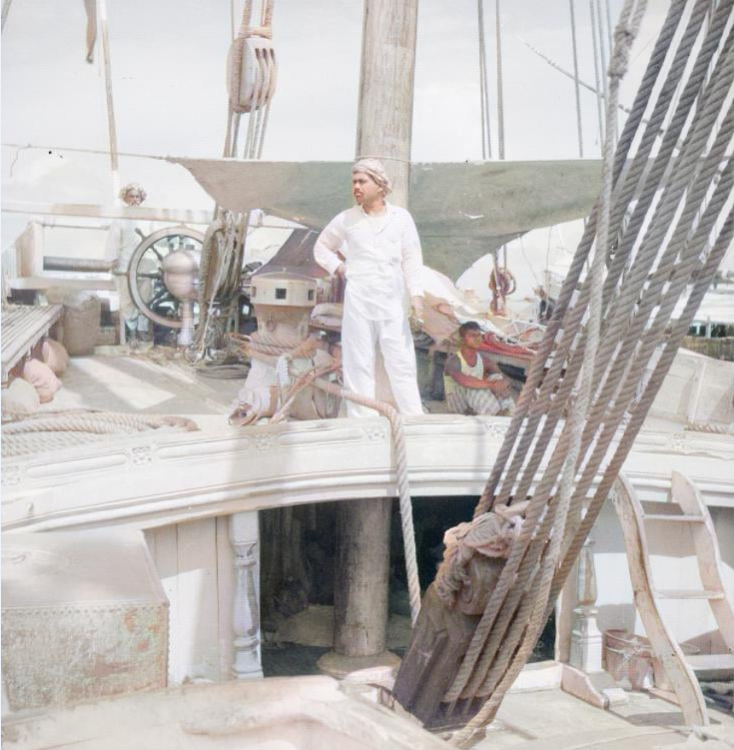
Unfortunately I'd already cut a slot for the mizzen knight in the poop decking, so I had to repair it.
And yes, I finally decided to removed the 'bow brace' from the stempost. As I'd cut into the stempost to locate it, I now have to restore it to shape.
Once the glue's dry I'll carve these pieces down flush with the stempost.
Steven
- Tony Hunt, Archi, Roger Pellett and 9 others
-
 12
12
-
Good to hear there were no major problems fitting the model together. It's a very elegant shape.
When you ask about tiller gear, are you talking about some kind of tackle (i.e. ropes and blocks etc) to make the tiller easier to use? I wasn't aware of any information on its use in carracks. Can you give a reference? 6 inches square at the tip seems a little extreme - how do you get your hand around that?
Regarding the paint colour - again, as far as I know there's no evidence for paint on caravels - certainly contemporary pictures show simple wood colour. But if you're doing it as a sort of tribute that's another thing entirely - it's your model and you can do what you like with it.
Steven
- Ferrus Manus and GrandpaPhil
-
 2
2
-
This ought to be interesting. . .
Steven
-
By the way, another argument in favour of having the windlass aft, particularly in a lateener, is that the halyard usually runs back diagonally (via a multi-sheaved block) to an angled block fixed to the deck (known in French as a sep de drise, and as a knight in English) , as in this picture.
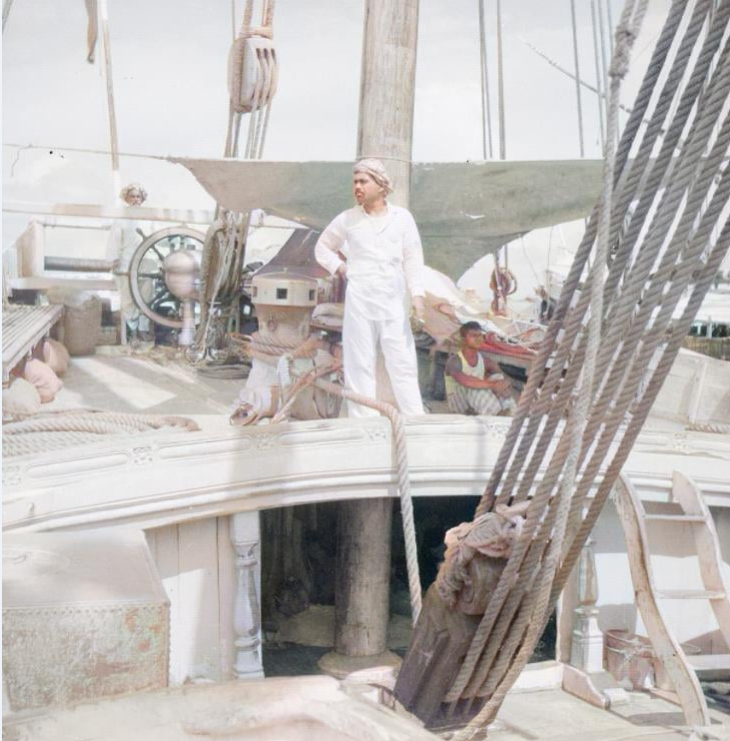
As you can see, there's a capstan tensioning the whole affair aft of the fixed block. It may also be used to tension the halyard of the mizzen by pulling forward, but this photo doesn't show that.
We're used to the windlass being forrard because modern windlasses are used to raise the anchors but in this context it would seem to make sense to have it aft.
BTW, I remembered that the town seal of Winchelsea (1274) also shows a windlass in use aft,
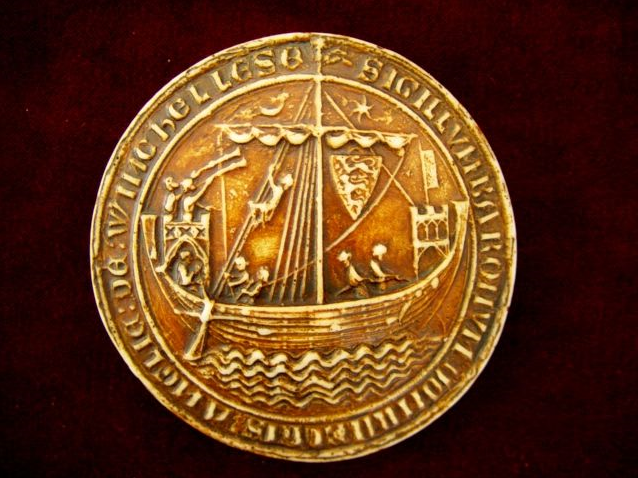
but that's for a square rig - I think it would be even more convenient and practical to have an aft-mounted one in a lateener.
Steven
-
Up to you, mate. It's one way of doing it. Checking back to your build log it appears your caravel doesn't have rails above the bulwark?
Steven
- mtaylor and Glen McGuire
-
 2
2
-
Yep. They have theories, but they can't be sure they're right. I've seen one reconstruction drawing of it being used to haul up the yard, but as with so much in archaeology it's impossible to really know.
Steven
-
Yes, and that's (sort of) what I did on my nef, though because it didn't have a rail above the gunwale I put an inner 'rail' that ran along the inside of the frames a little below gunwale level and tied everything off to that.
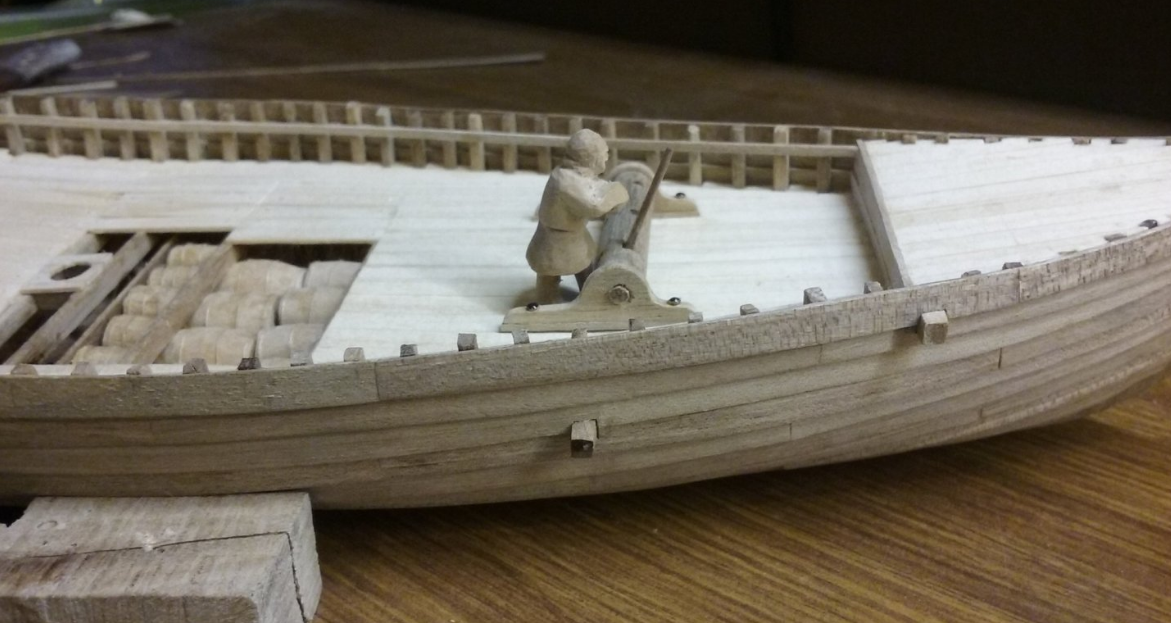
I considered dong the same on this build, which also doesn't have rails, but decided to try something new. There is absolutely nothing on the mosaics to show how the shrouds were fixed, so at least this would be something that works.
Steven
- mtaylor, Ferrus Manus, Glen McGuire and 1 other
-
 4
4
-
The eyebolts are for the standing end of the tackle. The pegs are for the running end, so the shrouds can be loosened when tacking.
Steven
- mtaylor and Glen McGuire
-
 2
2
-
The only archaeological info I can quote is from the Bremen cog of c. 1380 in Germany, which is not terribly apposite to your model. However, this vessel (which was 23 metres (75 feet) long had both a windlass (mounted in the stern) and a capstan (on the poop). See
which shows both the original ship and a replica with everything in the same places. So, an aft-mounted windlass would make sense.
Steven
-
You've done a very good job on the "woodening/weathering" of the deck. The only comment I might have is that it is perhaps a little too weathered. But that's probably being overly picky (but I'm a bit obsessed about this subject at the moment, as I'm trying to weather the decks of my own build without overdoing it).
Very wise replacing the mast with a wooden one. This is a fairly common thing plastic ship modellers (the ships are plastic, not the modellers) encounter, and is often solved the same way. And you've done a nice job of it - it looks much better than the original.
Steven
-
The answer is as much of a mystery as many other things relating to these ships. There are very few pictures of any type of ship from this time from an angle that would answer your question. One of the few is this one, of a carrack (from Botticelli's 'Judgment of Paris')
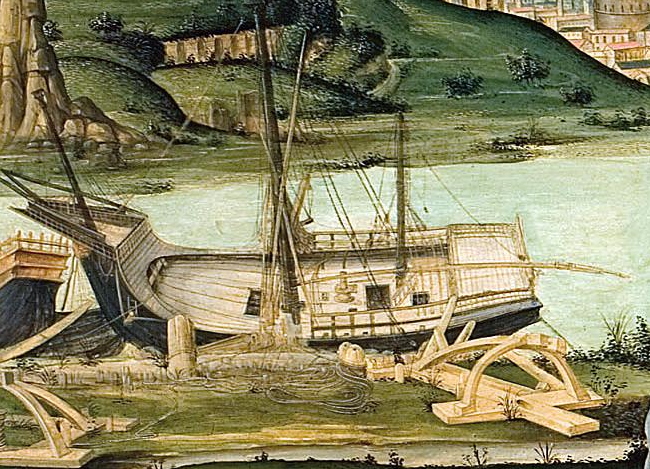
which doesn't show anything at all. Presumably any winding gear is below decks, unless that's a capstan aft of the mainmast. I'm having the same problem with my San Marco ship, and I haven't fully decided what to do about it.
Your guess is as good as anybody else's, but I'd think there'd only be a single windlass in a ship that small. And perhaps it would be aft, as the force needed to raise the yard would probably be more than that needed to raise the anchor (or would it? Pulling the anchor out of the ooze might well need quite a bit of effort, but even if so, an aft-mounted windlass would be able to do both jobs.)
So, do what you think is best.Steven
-
In fact the 'crenellations" turn out to be only two gaps. The rest are only an optical delusion (yes, I know that's wrong, but I think it sounds better) caused by rope coils hanging over the side making it look like there are more gaps.
Yes, upsetting to discover that my mosaics have been tampered with, but in truth, I think the only thing I'm likely to change is that bow-brace. It doesn't appear on any other ship of the period I've been able to find, (or any other for that matter, until you get to maybe the 18th century, and that's something completely different) so I think I'm going to get rid of it (even though my stepdaughter thinks it looks nice - she just doesn't understand . . .)
Regarding colour, I'm still not happy. I really want the wood to look silver-grey, like normal weathered timber, not dirty timber. Time to try again - I think I'll introduce some white into the mix and see what happens.
Steven
- Glen McGuire, mtaylor and Cathead
-
 3
3
-
Thanks everybody for the helpful comments.
But now onto other things. To be honest, I feel like a bit of a twit. For some years among my store of TAMU Masters' theses (copied before they stopped making them unavailable on-line) I've had one by Lilian Ray (now Lilian Ray Martin) called Venetian Ships and Seafaring up to the Nautical Revolution: A Study Based On Artistic Representations of Ships and Boats Before c. 1450. This was later released as a full-length book entitled The Art and Archaeology of Venetian Ships and Boats. Among the pictures she deals with are the mosaics in San Marco upon which I've based this model. Today while chasing up something else, I looked at this thesis properly for the first time.
And I've learnt a few things. First, that the mosaic I've mostly used was extensively restored during the Renaissance, so that many of the details I've been relying on may be - well, unreliable. In particular, to me it casts suspicion on the curved 'brace' at the bow, which appears only in this one mosaic. Was it added later, and if so should I remove it?
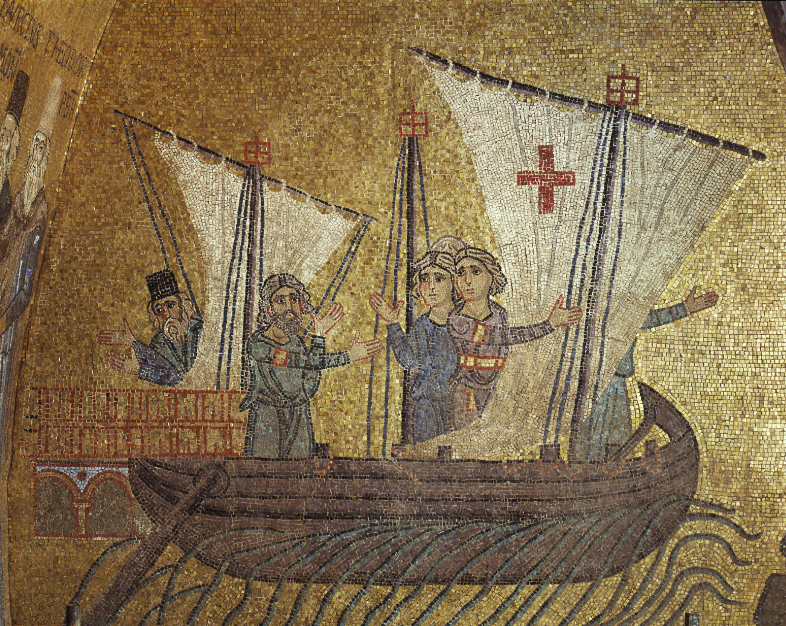
And those strange extensions below the aftercastle - are they also later additions? As I had no idea what they could be I omitted them, and now I'm rather glad I did.
And two of the other mosaics were extensively - and badly - restored in the 1880s.
Another thing - one of the mosaics I included in my references
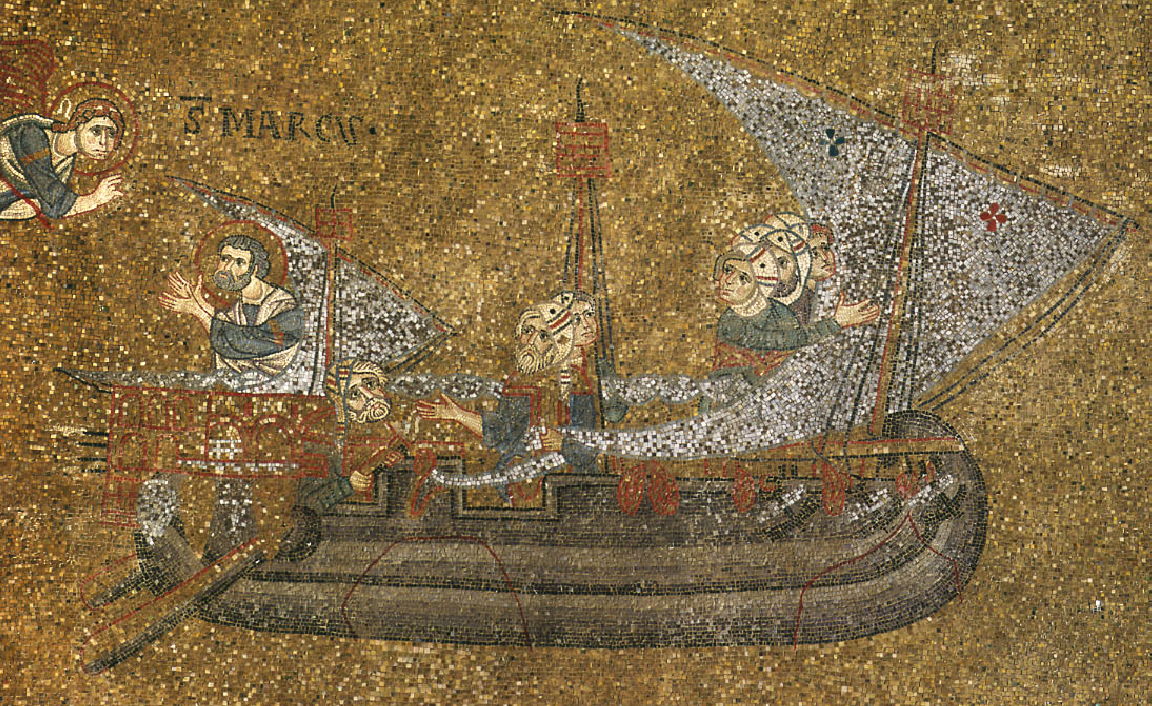
turns out to be part of a completely different series. Still about the same date and still in San Marco, and the ships are so similar in many ways that I think I'm still right in using it as a reference. But the author proposes that the strange "battlements" on this ship show spaces where part of the upper works have been removed to facilitate loading cargo, as in Woodrat's Venetian Round Ship. Not only that, she references another example of this in a 14th century fresco by Andrea di Bonauito de Firenze - The Conversion of St Ranieri in the Camposanto of Pisa (modelled after a 13th century original by Giotto).
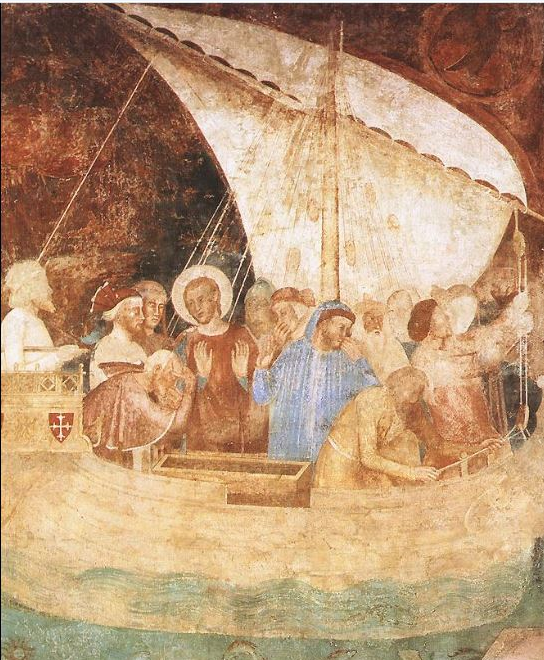
Woodrat take note.
So I'm left with a bit of a quandary. Do I remove that bow-brace? I'm very tempted to do so, despite all the work I put into it.
By the way, I have to say though much of the thesis is very illuminating, I don't agree with everything she says. Particularly she mistakes what is very obviously the outline of a sword hanging from a character's waist, for ropes controlling the rudder. But generally a very interesting read and certainly got me thinking.
Steven
- Glen McGuire, Cathead, Bryan Woods and 5 others
-
 8
8
-
Good observation. Very interesting. And yes, climbing along the yard seems to have been how sails were set and furled. Still happening in the 20th century.
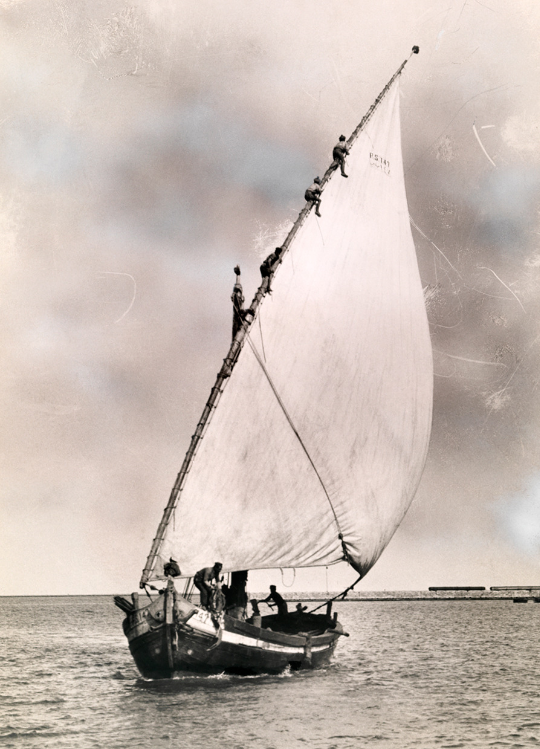
Steven
-
Thanks everybody. I'm of the same opinion, but wanted to see what others thought. Further comments and suggestions welcome.
Steven
- mtaylor, Glen McGuire, Ferrus Manus and 1 other
-
 4
4
-
Very true, and if you can come up with something that you believe fits the evidence better, go for it!
Steven
-
I've been experimenting with weathering, and I'd like the team's opinion. I don't really want the ship to look completely neglected, but I'd like to show that she's been in use for a good while. Here are two tests I made to weather the decks - the first was using a thin (water-base) wash of acrylic - not too good because the water made the fibres of the wood rise up. The second I used (black) enamel thinned out with mineral turpentine. What I'd like to ask the team is - is this too much? Does she look like a tramp, rather than a normal ship that's been reasonably kept up, but has been exposed to the weather over a good period of time?
The other problem, by the way, is that there are bald spots where the paint has been over the top of white glue. I'm hoping I don't encounter this when it comes to the real thing.
On to the rest of my recent progress. Making and installing the pumps:
I thought long and hard about how to fix the lower ends of the shrouds. I decided (as this is the Mediterranean) to use pairs of blocks, not hearts or deadeyes. But there's simply no evidence at all of how they were fixed to the hull in 1150. Nix, nada, nuthin'.
I've made a series of beams attached to, and joining, the fronts of pairs of frames. In each one is an eyebolt to hold the lower end of the strop around the lower block, plus a vertical peg to tie off the downhaul. This is a possible configuration, but is almost certainly not what was actually used. But in the absence of available evidence, hey, what can you do? Certainly, I don't think anybody can prove I'm wrong.
Eyebolts from garden tie-wire:
This had a high failure rate - I used a pair of fine long-nosed pliers to do the bending, and quite often the shape just turned out wrong. I've kept the failures in case I can use them for something where the wonky shape doesn't matter.
Beams with eyebolts:
Pegs under way:
Checking diameter:
Cut to length
And dry fitted
Steven
- Bryan Woods, Baker, tarbrush and 6 others
-
 9
9
-
I'd agree that this reconstruction drawing very accurately reflects what little evidence we have on the shape of caravels - and it's a beautiful shape (cara bella! one of the possible derivations of the name). I have great respect for Landström's work. He really had a good understanding of what was likely in a vessel if it was to be seaworthy.
Weirdly, caravels were quite tiny for something that traversed the world - about the size of a fishing boat.
The rigging in this pic would be the standard rigging for a lateener, but I agree you're best checking out the contemporary imagery for yourself to confirm or discard what is shown here.
Watching with interest.
Steven
- Ferrus Manus and GrandpaPhil
-
 2
2
-
-
That's a really nice colour scheme. Looking forward to seeing it complete.
Steven
- Glen McGuire, mtaylor and Ian_Grant
-
 2
2
-
 1
1
-
Looking good so far, but I'm looking forward even more to seeing it completed.
Steven
- Knocklouder, Keith Black, mtaylor and 3 others
-
 5
5
-
 1
1
-
Hi Mark, I'm glad you think so. I do love the mosaics. Whether they inspired the interest in the boats - well, long story. Before I got back into ship modelling, I'd been into mediaeval re-enactment for many years, particularly concentrating on Anglo-Saxon and Byzantine, where they came together in the Varangian Guard.
The mosaics in San Marco are mostly Byzantine-inspired, as Venice was in Byzantium's cultural orbit for centuries (until they bit the hand that fed them in 1204!), so I naturally gravitated toward them. Once I got into ship modelling again, they stayed at the back of my mind but I'd never really been able to figure out how they would have been in real life until I saw some modern sketches that inspired me (I think the story of all this is on the first page of this build log). That got me going, and it all proceeded from there. But a lot of research was needed, and I also got a lot of help from Woodrat who'd made a model of the 14th century Contarina ship. I hope that answers your question.
Steven
-



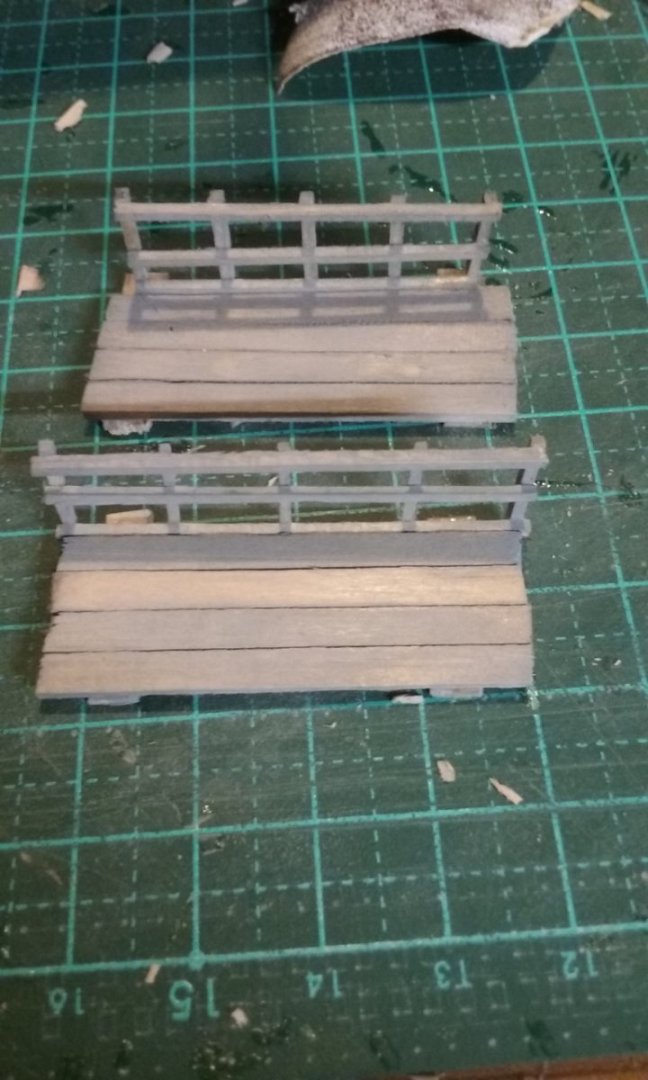
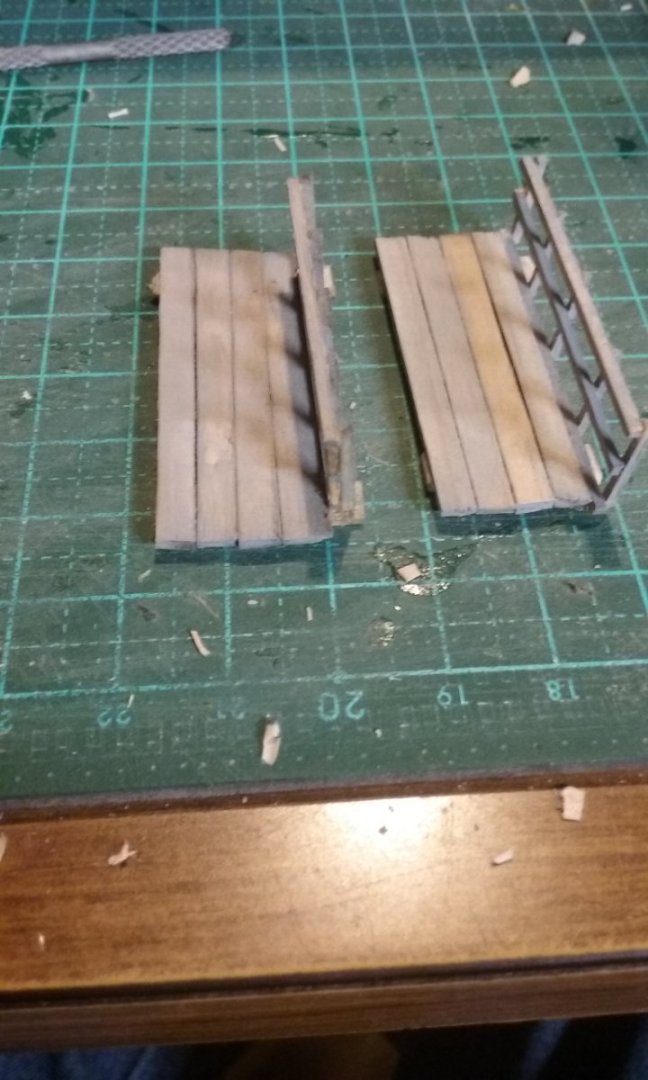
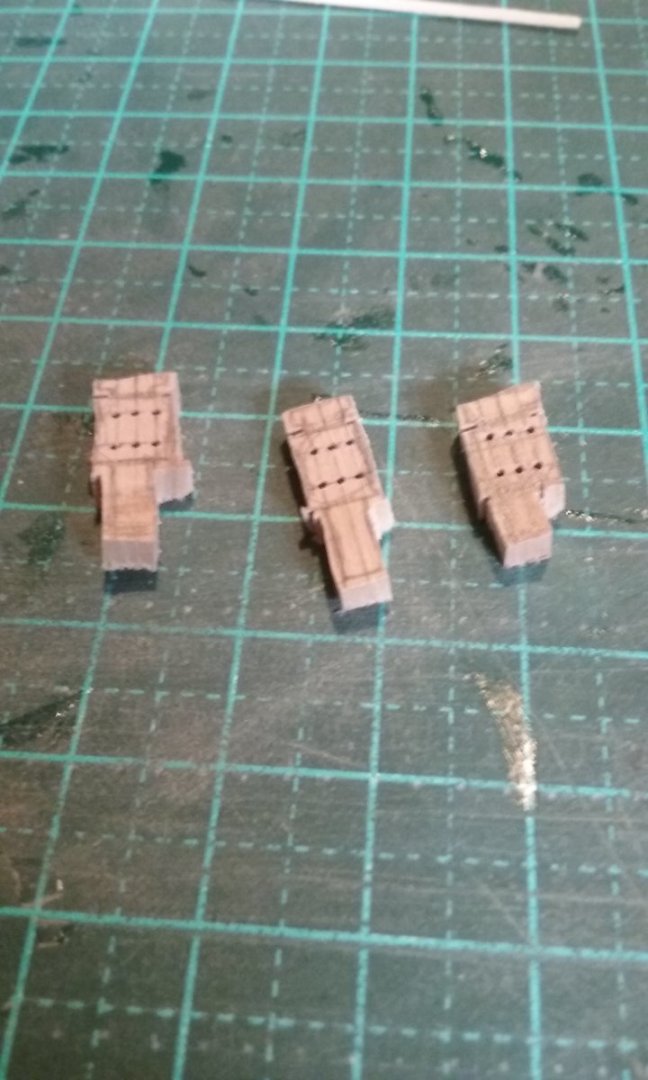
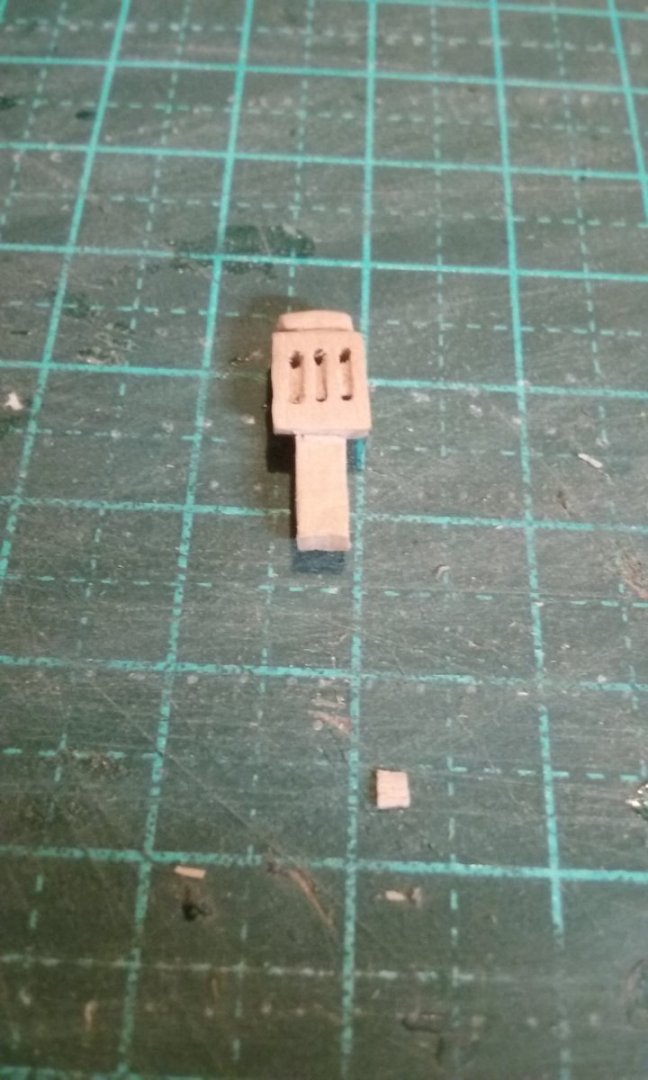
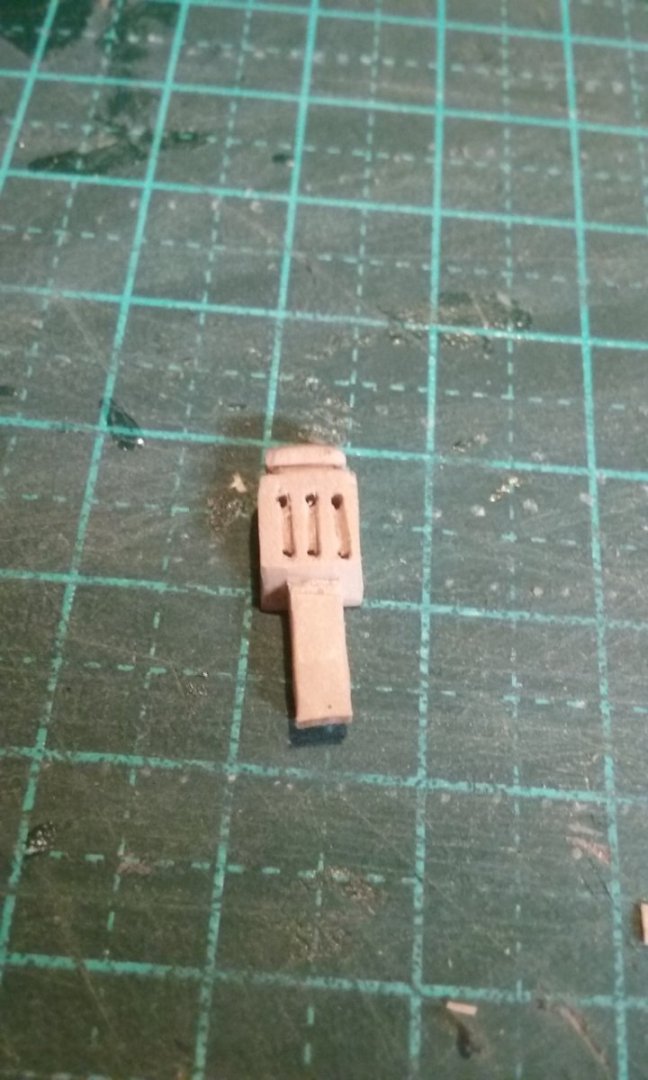
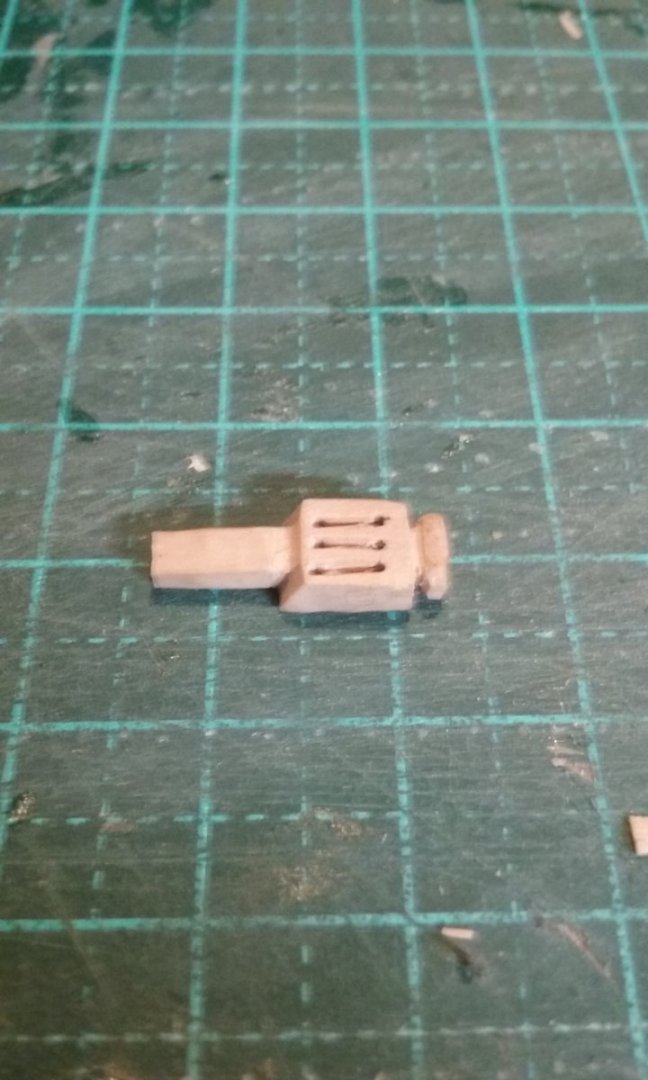
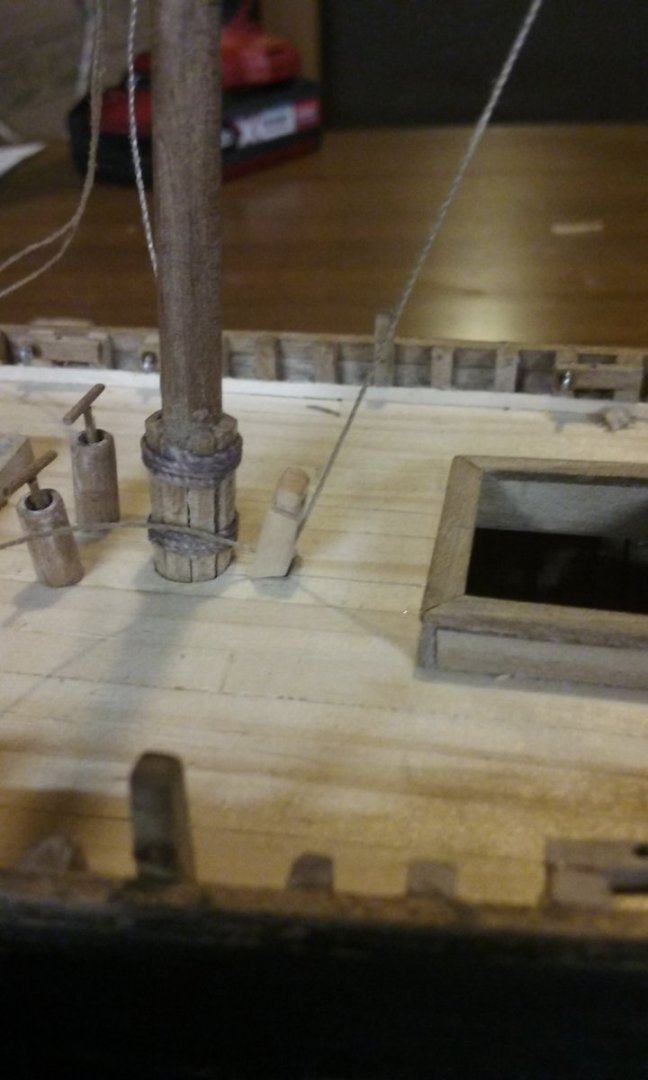
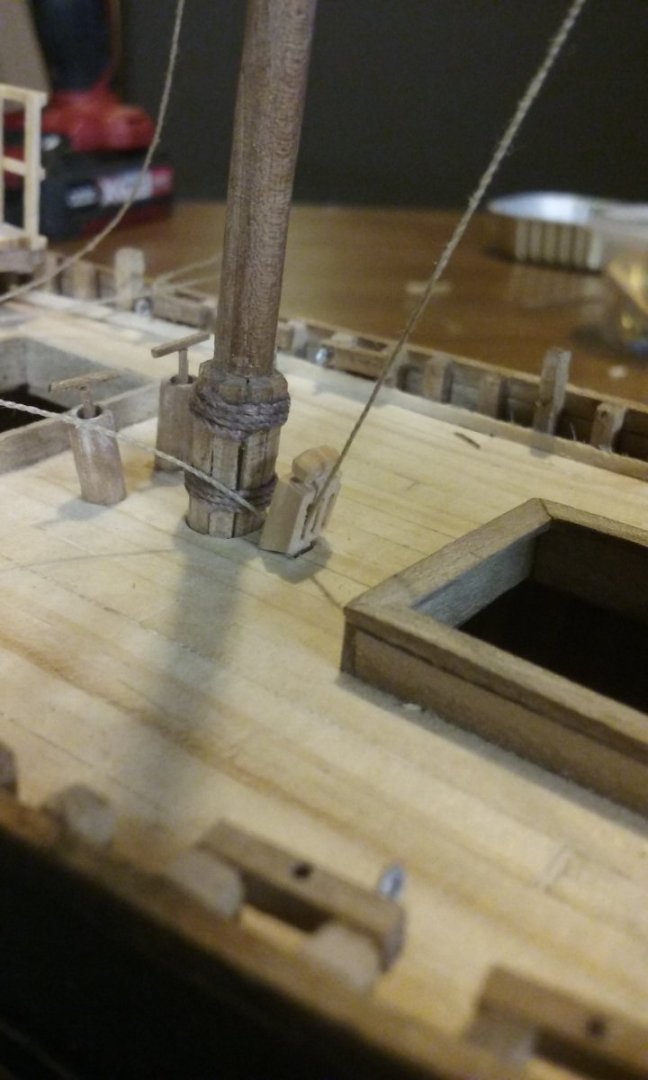
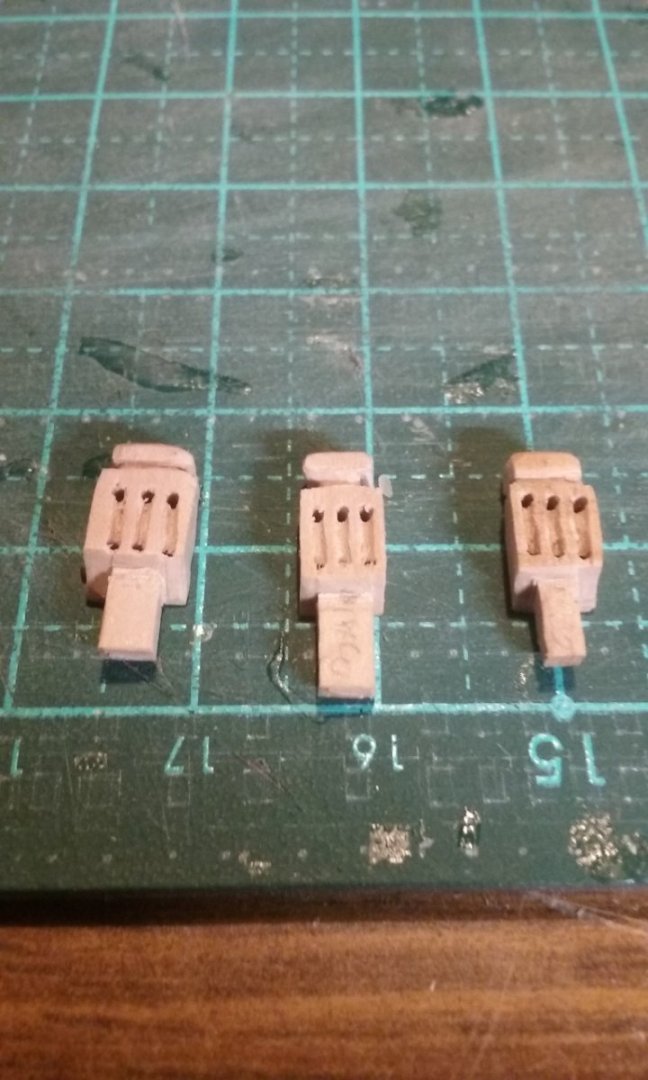
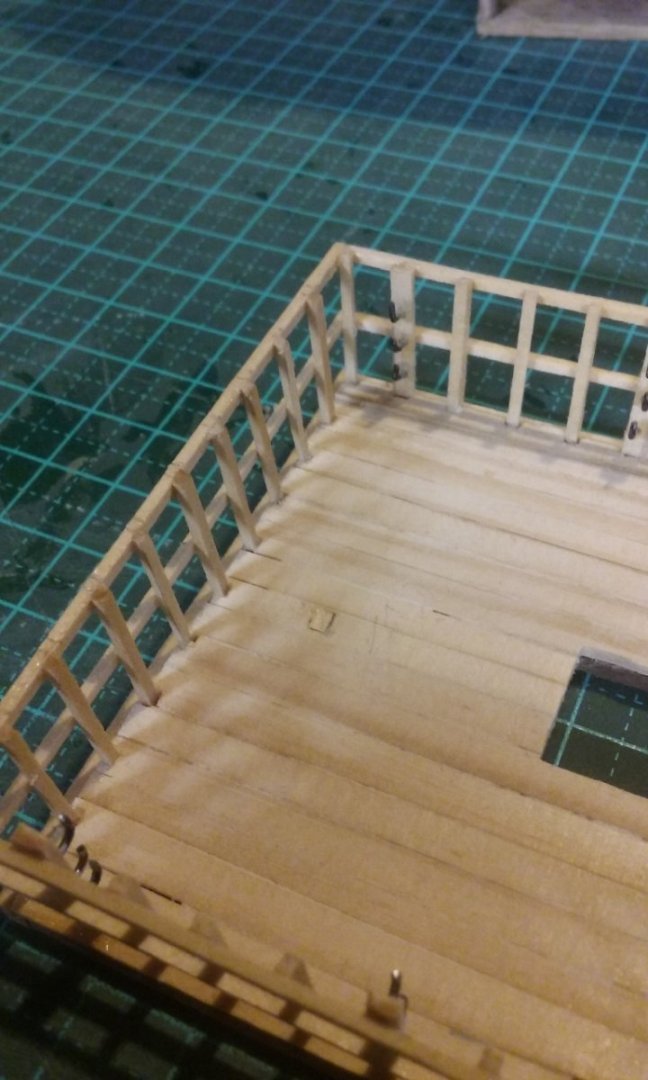
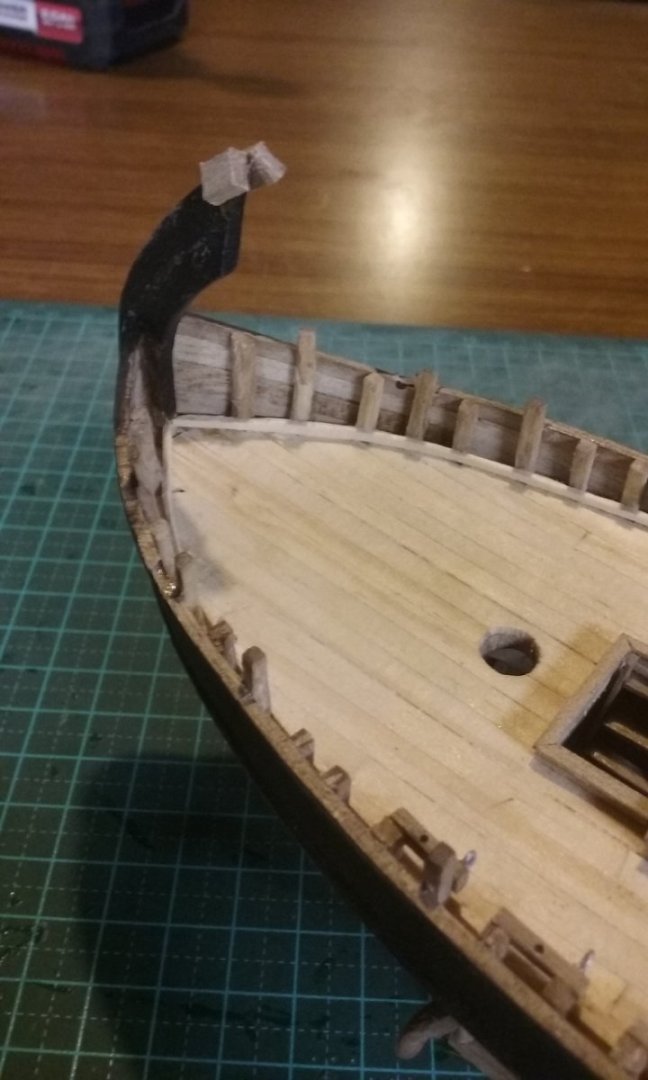
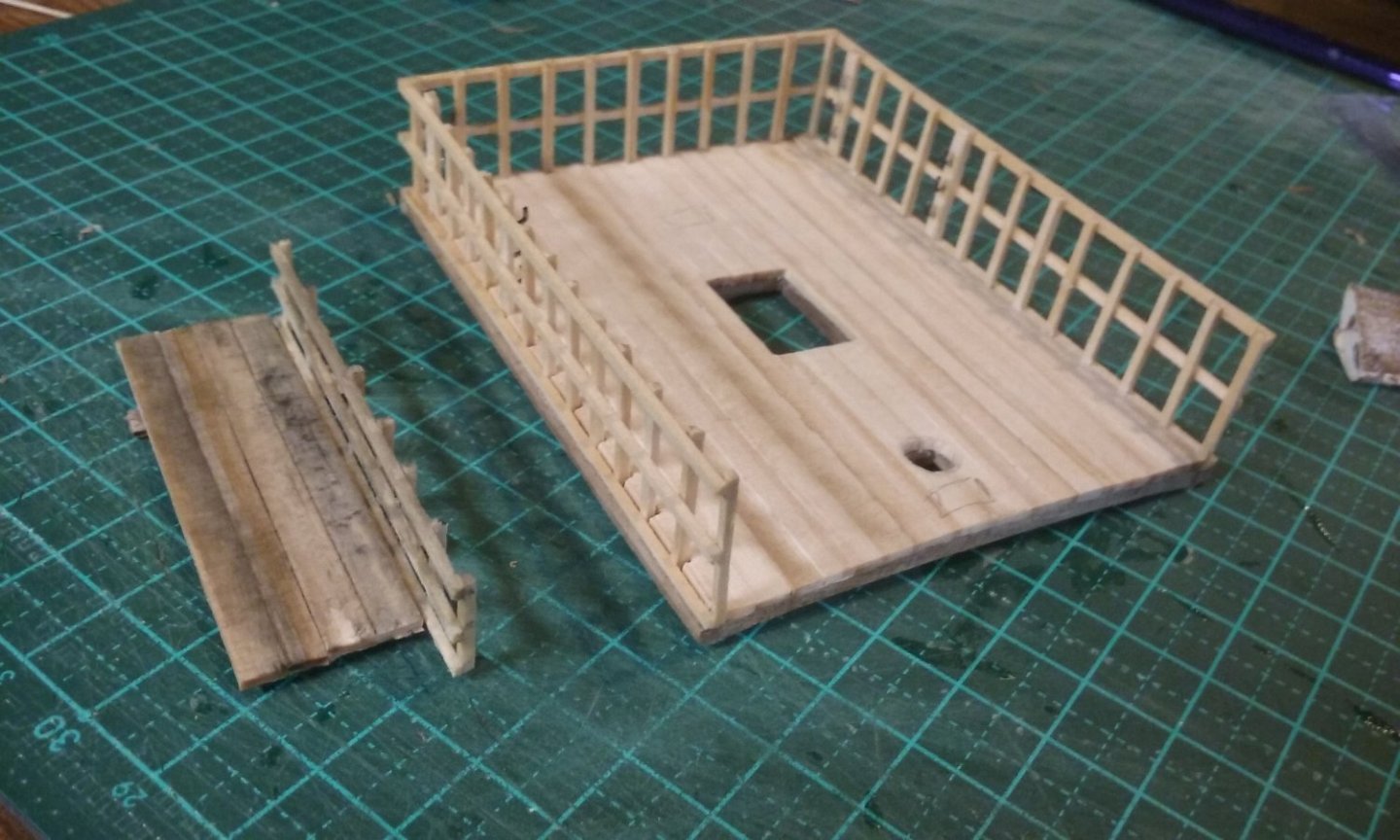
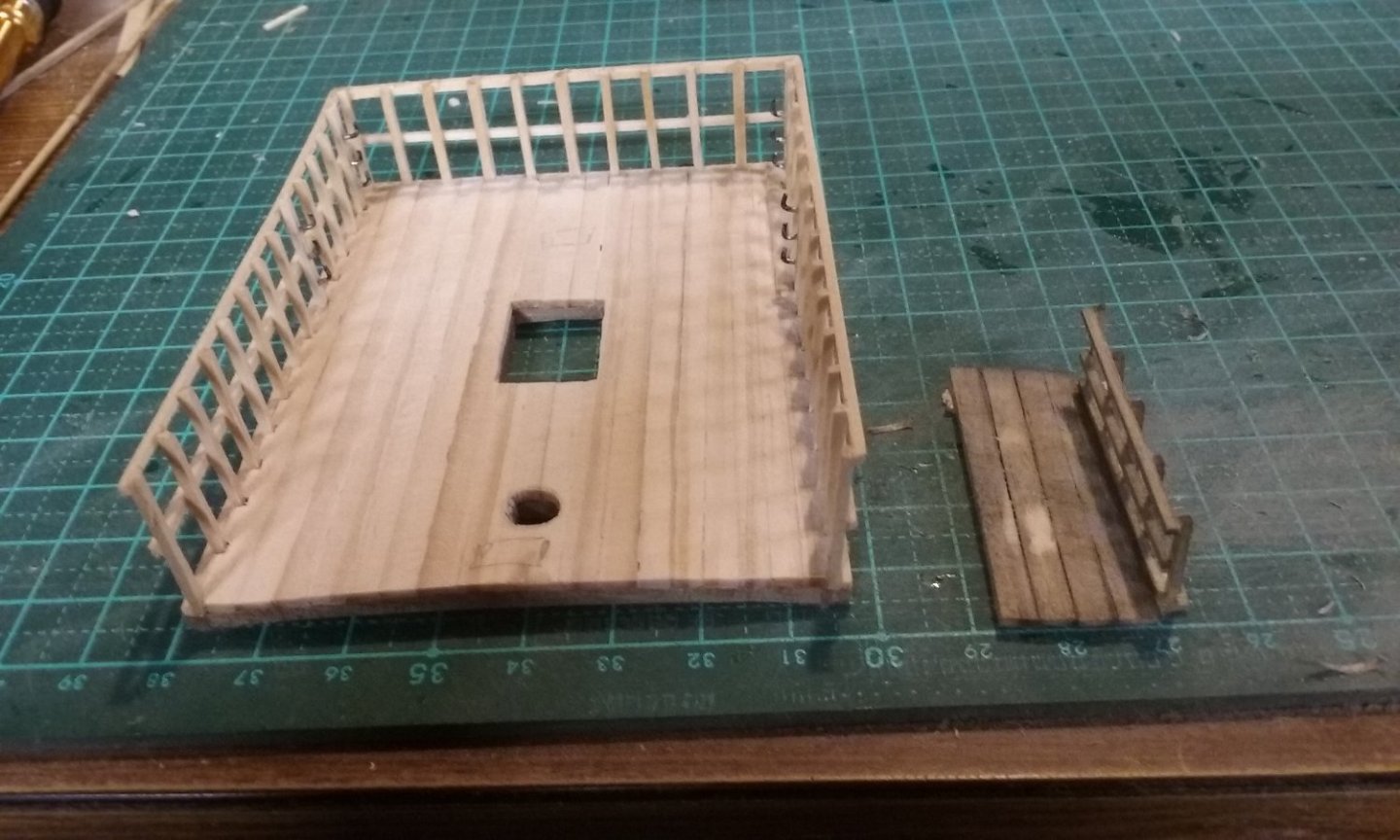
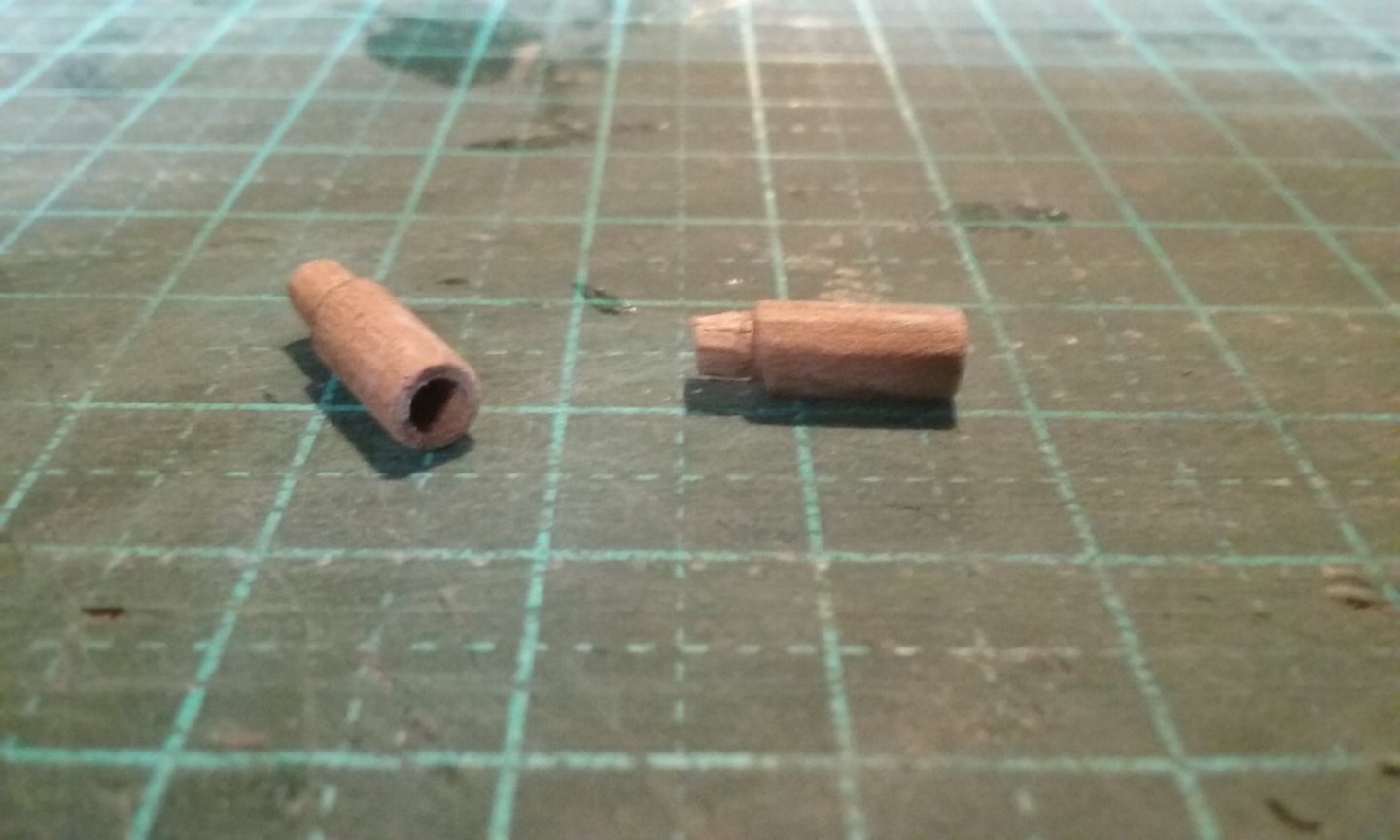
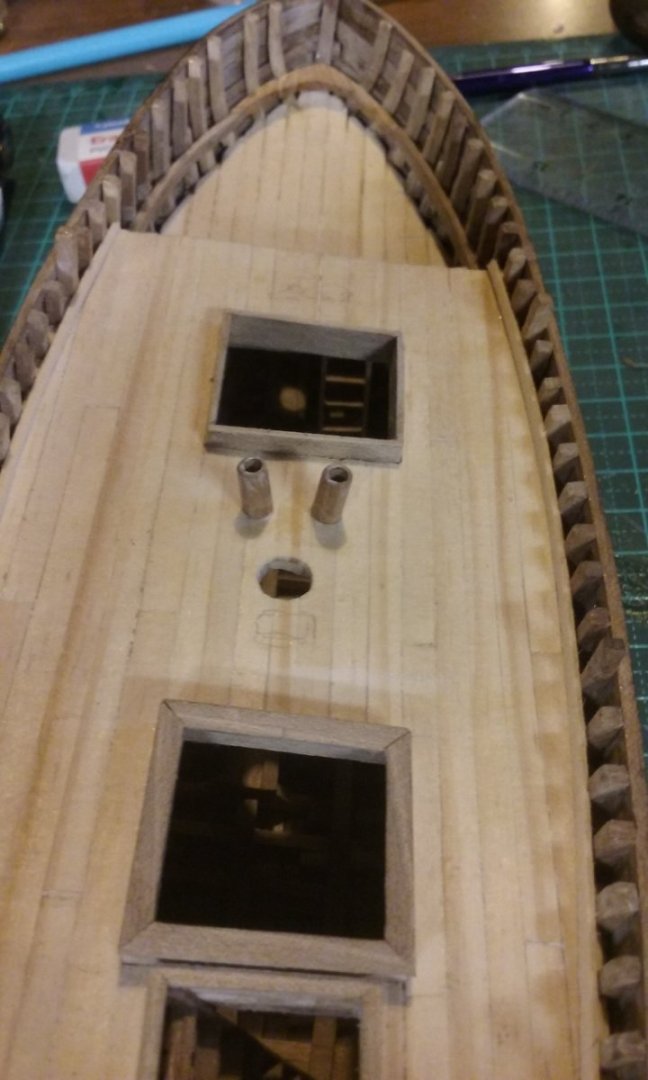
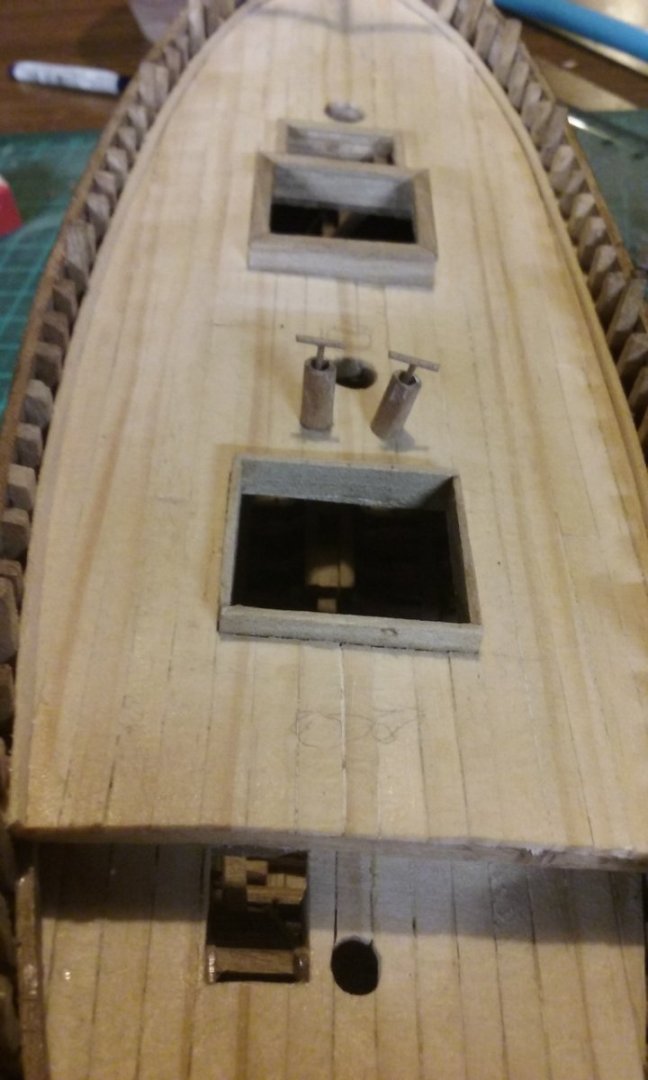
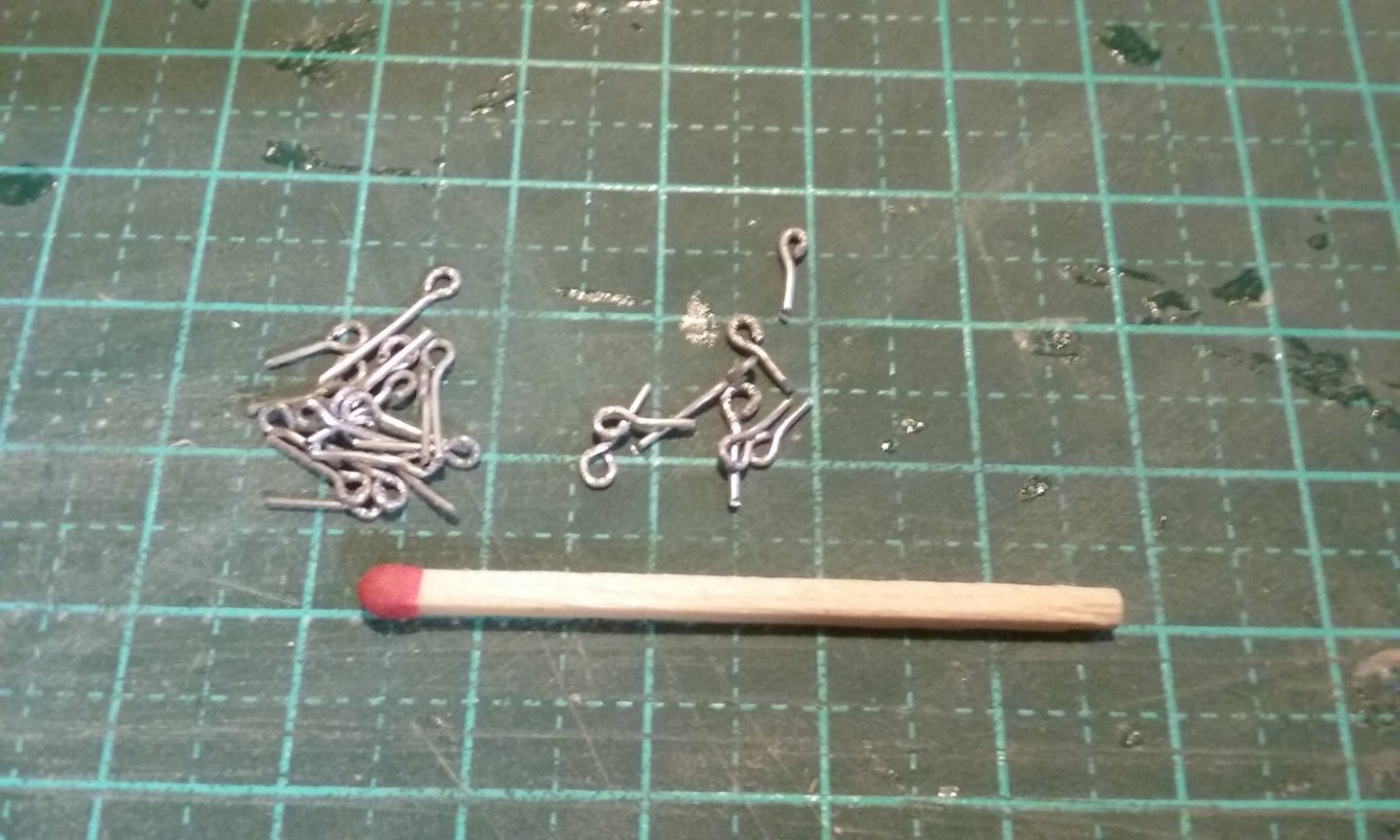
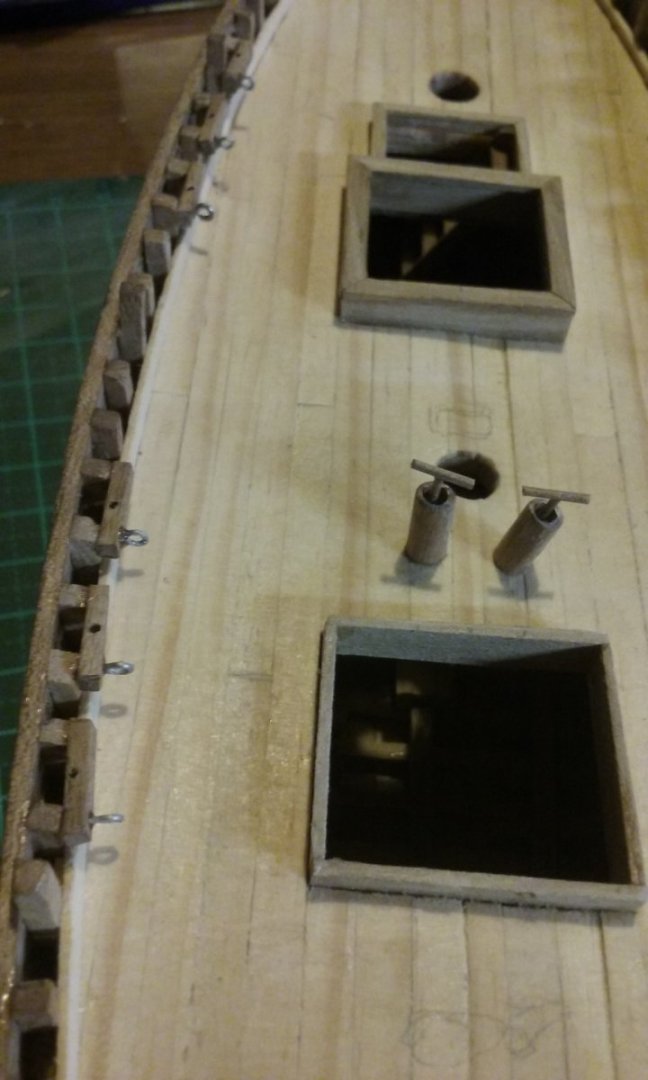
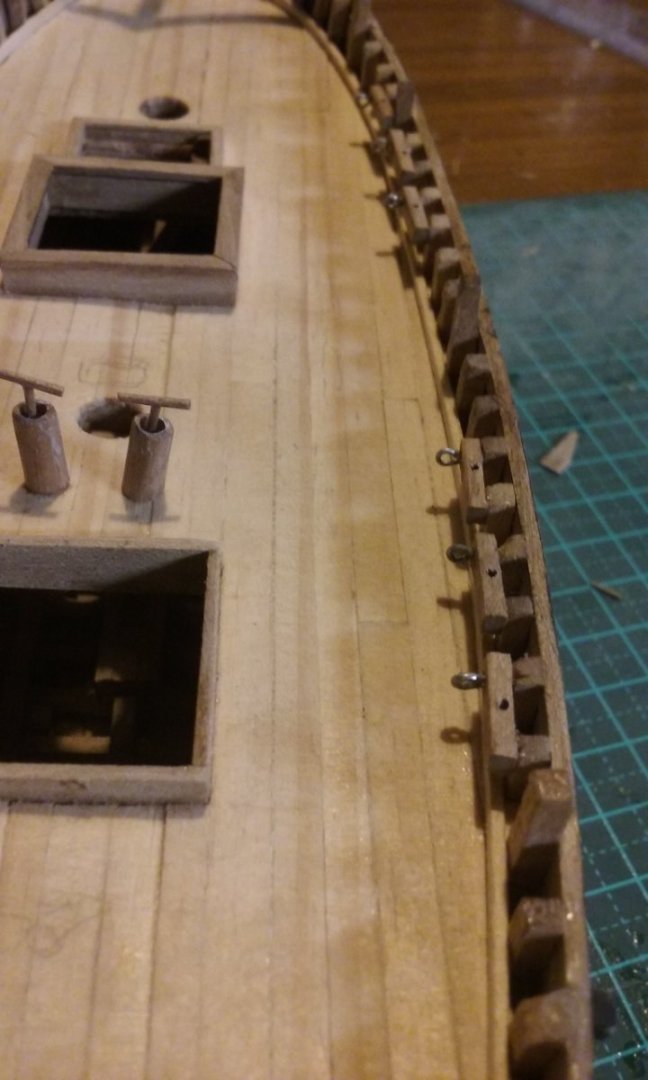
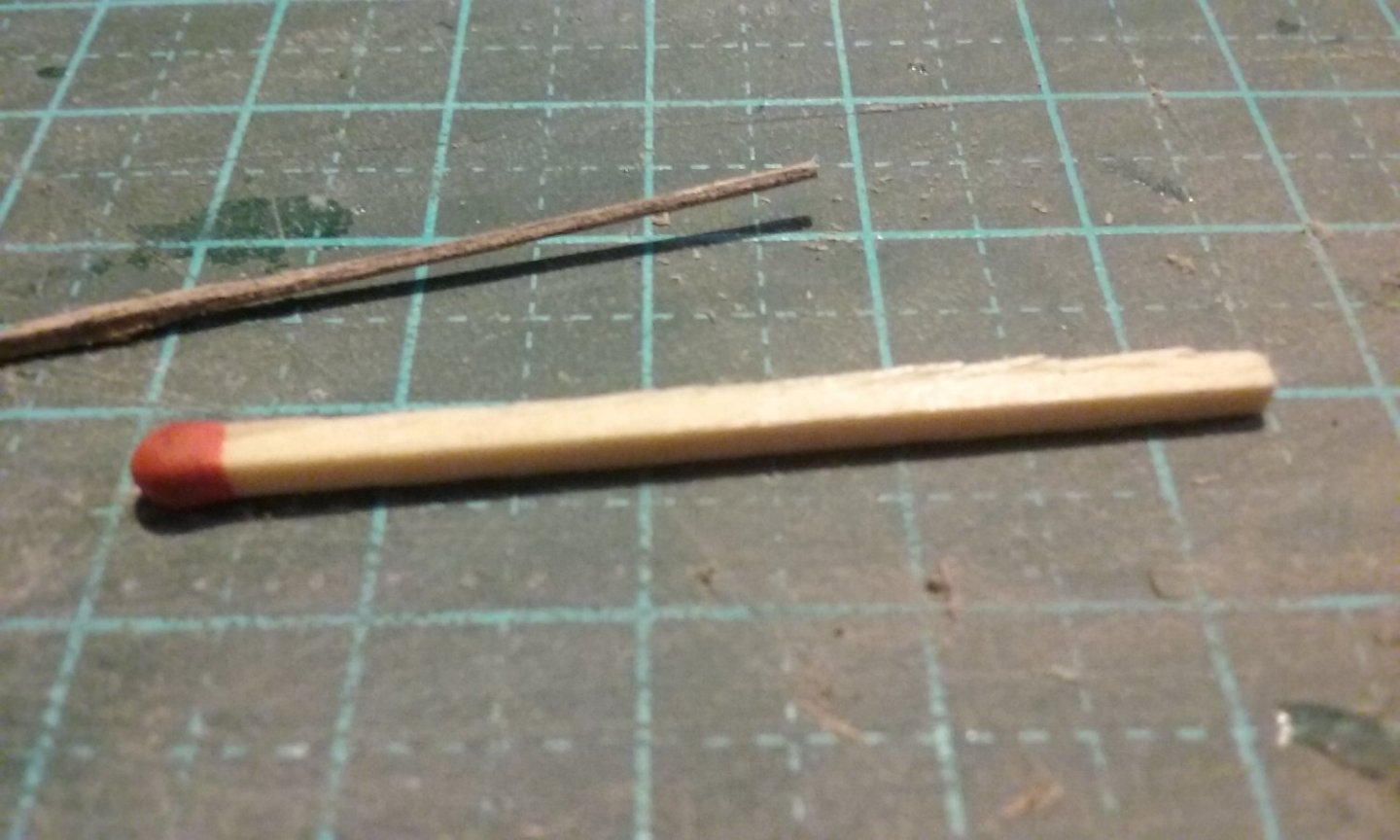
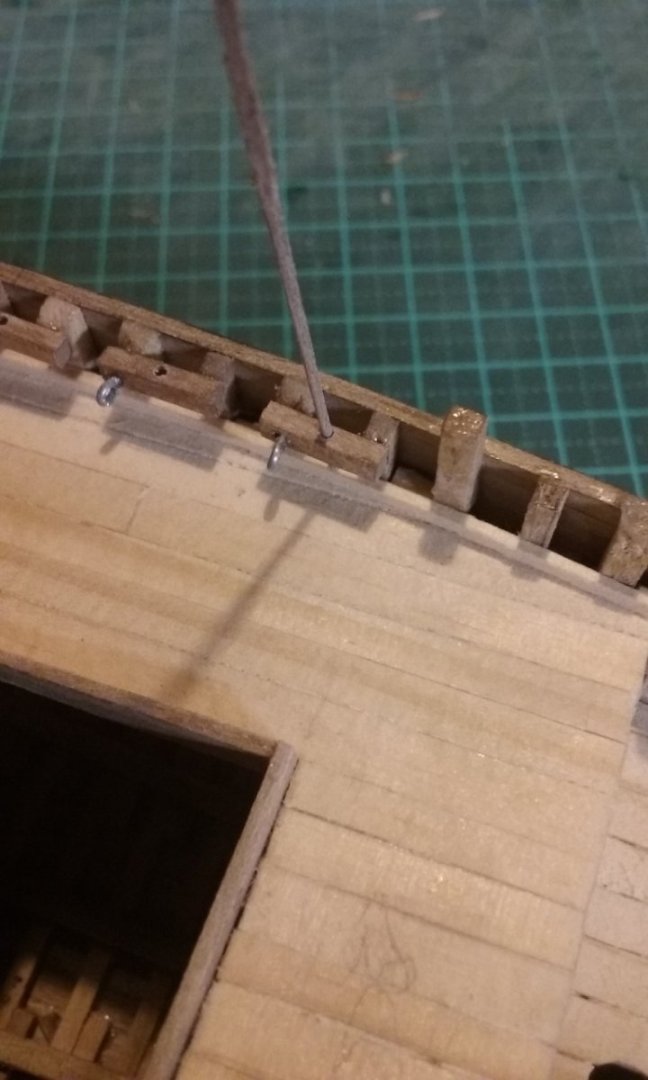
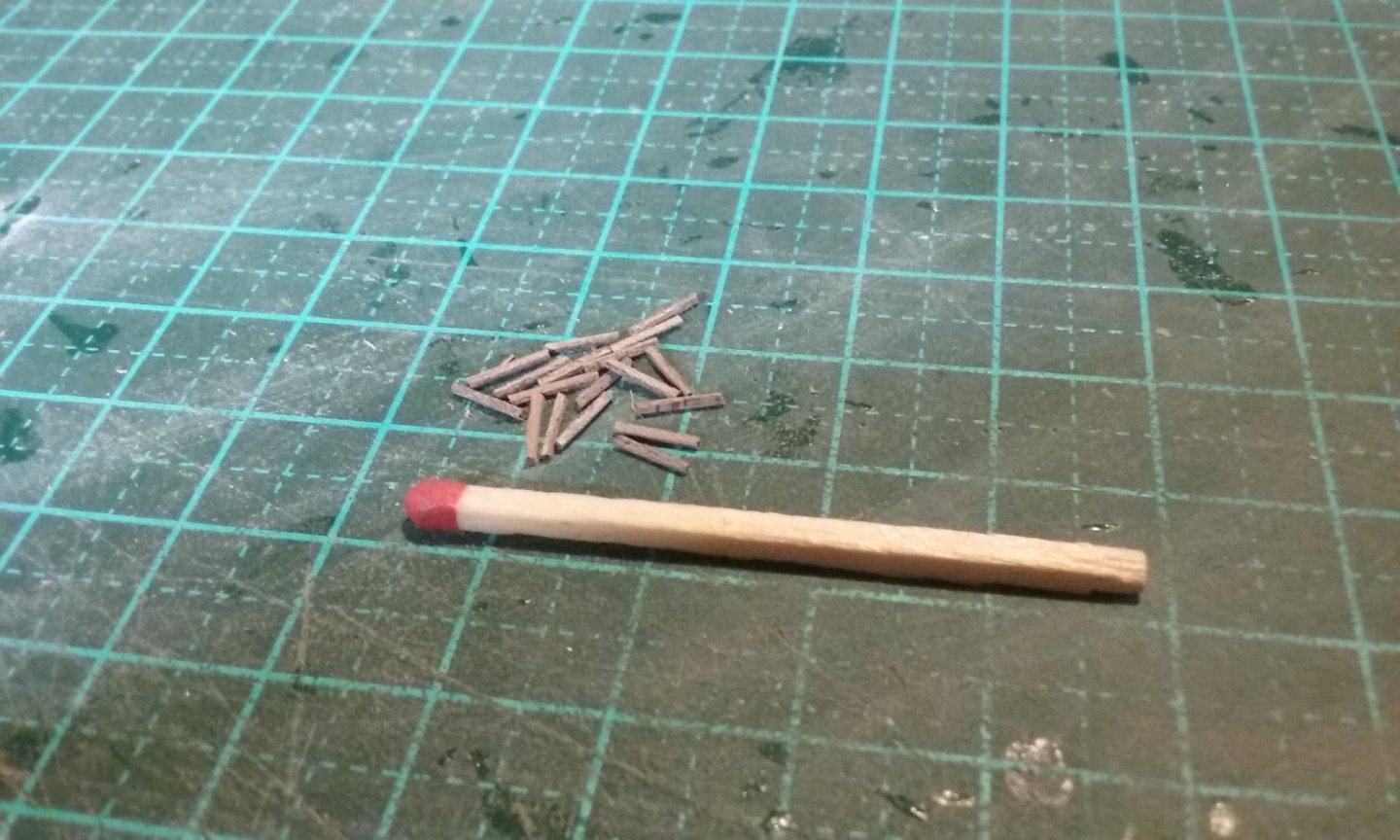
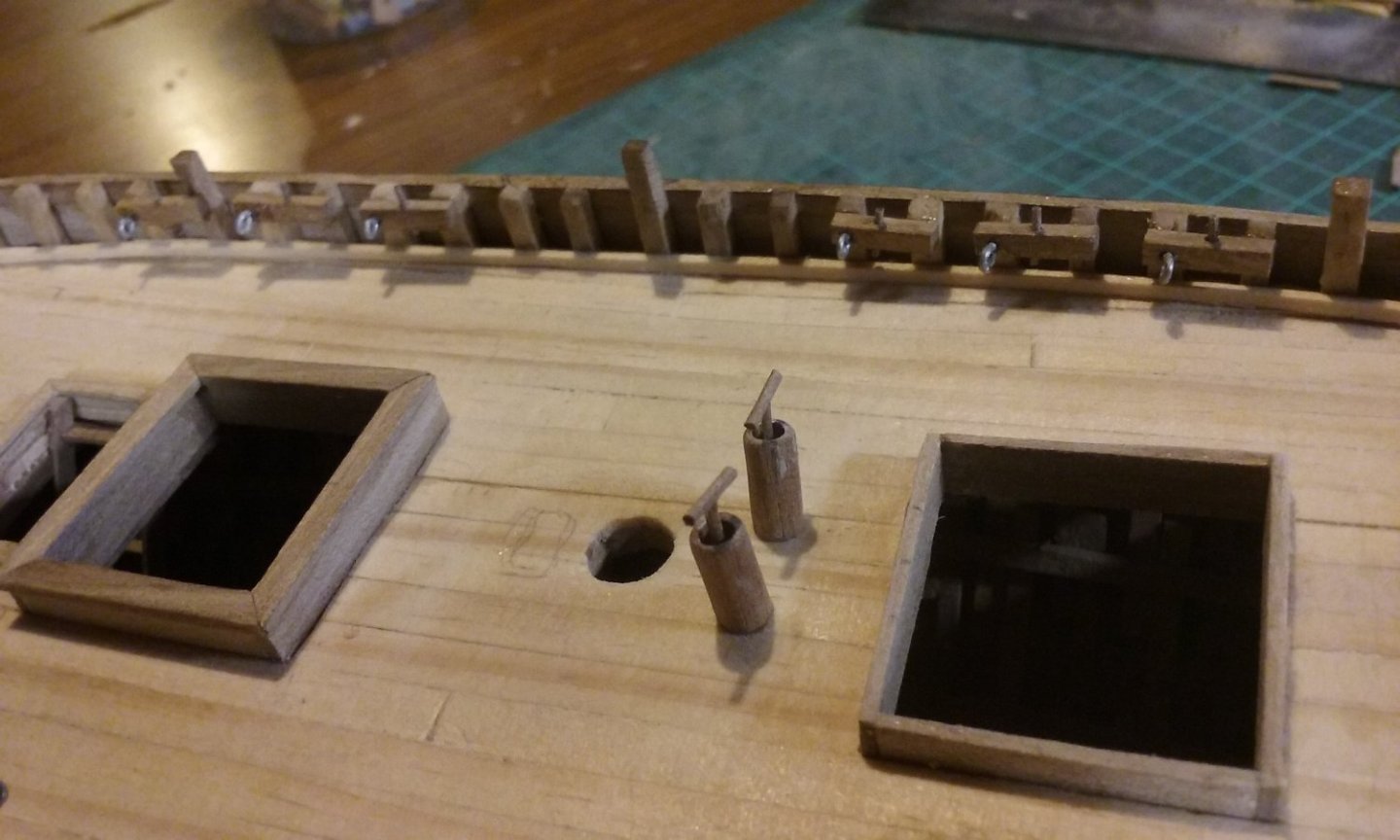
The San Marco mosaic ship c. 1150 by Louie da fly - 1:75
in - Subjects built Up to and including 1500 AD
Posted · Edited by Louie da fly
I just tried weathering the windlass and the knights. Here's the original colour of the windlass:
And here it is after weathering, using the technique described above. I'm quite happy with the result. I might do a little more detail work in the weathering, so it's not all the same colour throughout.
And as I weather different things at different times there's bound to be some variation in the colour of the various parts, but I regard that as a good thing as that's probably what would happen in nature.
Steven